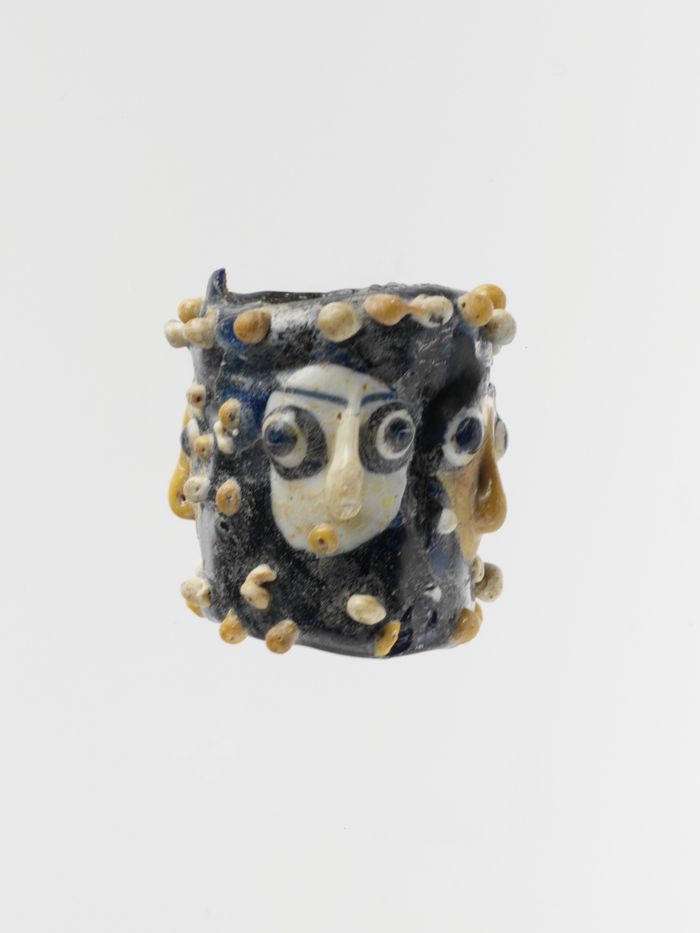
Glass face bead
An item at Metropolitan Museum of Art
Translucent dark cobalt blue, with additions in opaque white and yellow and translucent blue. Cylindrical, with rounded edge at both ends; large hole running vertically through bead. Four faces, alternating with two in yellow and two in white, each made from a large added blob, augmented with applied nose, stratified eyes, eyebrows, ears, pendant earrings, and small round mouth, flanked above and below by irregular rows of knobs in white and yellow. Broken and repaired, with some areas of fill, and a few knobs missing or damaged; some pitting and iridescent weathering on exterior, encrustation on interior of hole. This large face bead is closely related to both eye beads and head pendants. Examples of both groups, which have been found throughout the Mediterranean region, are also displayed here [Gallery 171, Case 31].
Greek and Roman Art
An exhibit at Metropolitan Museum of Art
The Museum's collection of Greek and Roman art comprises more than thirty thousand works ranging in date from the Neolithic period (ca. 4500 B.C.) to the time of the Roman emperor Constantine's conversion to Christianity in A.D. 312. It includes the art of many cultures and is among the most comprehensive in North America. The geographic regions represented are Greece and Italy, but not as delimited by modern political frontiers: Greek colonies were established around the Mediterranean basin and on the shores of the Black Sea, and Cyprus became increasingly Hellenized. For Roman art, the geographical limits coincide with the expansion of the Roman Empire. The department also exhibits the art of prehistoric Greece (Helladic, Cycladic, and Minoan) and pre-Roman art of Italic peoples, notably the Etruscans.




